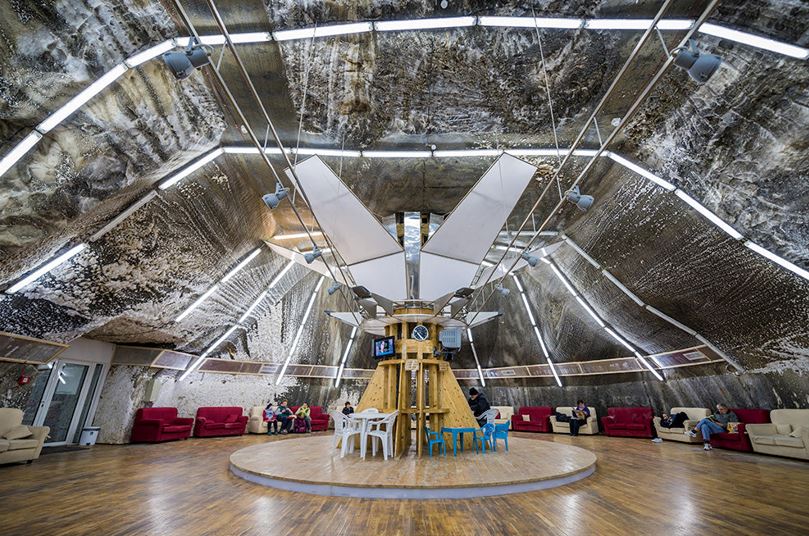28.04.2023
ソルトセラピーの歴史。

起源
ソルトセラピー(別名「ハロセラピー」)の効用は、少なくとも 1830 年代から知られていました。当時、ポーランドの医師フェリクス・ボツコフスキーは、ほとんどの鉱夫がひどい肺疾患に苦しんでいる一方で、近くの塩鉱山で働く男性は呼吸器系の健康状態が非常に良好であることに気付きました。実際、ボツコフスキーの患者は、中流階級や上流階級の患者のほとんどよりも気管支炎や肺炎の発症率が低かったのです。
この現象の影響を研究したボツコフスキー博士は、1839 年にポーランドのヴィエリチカ岩塩坑に最初の健康リゾート施設を設立してオープンしました。この施設は現在も営業しています(画像を参照)。
第二次世界大戦
第二次世界大戦中、ドイツの医師 K.H. シュパンナヘル博士は、爆撃から逃れるために塩坑や洞窟に隠れた人々が呼吸器系の健康に良い効果を経験したことに気づきました。1949 年、シュパンナヘル博士は、自分の病院がクリュテルト洞窟の一部を入院部門にし、地下環境の医学的効能を確認することを提案しました。これらの研究の結果は、地下環境を利用して呼吸器疾患を治療する現代の「洞窟療法」の基礎を築きました。
塩の洞窟からソルトセラピーへ
これらの方法は成功し、近隣の塩鉱山やヨーロッパの洞窟、さらには旧ソ連にまで広がりました。1968 年には、ウクライナのソロトヴィノ塩鉱山に「洞窟病院」が開設されました。
その後 10 年間で、医師たちは塩の洞窟での治療効果のほぼすべてが乾燥した塩粒子を呼吸することから得られることを確認しました。塩粒子を地上で生成できれば、治療と研究をより効果的に行うことができることは明らかでした。1985 年、オデッサの研究者は塩を粉砕して砕き、微細な塩粒子を空気中に拡散させる装置を開発しました。世界初の乾燥ソルトセラピー、またはハロセラピー装置が誕生し、ソルトセラピーが世界中の人々に利用可能になりました。
ソルトルームブーム
2000 年代初頭までに、ソルトセラピー機器の使用は米国と英国に広がり、その後数年間、米国では週に 1 軒のペースで新しい「ソルトセラピースパ」または「ソルトルーム」がオープンしました。ゲストは通常、これらのスパに 1 時間訪れてソルトセラピーの恩恵を受けるために約 30 ユーロを支払います。そのため、この治療は効果的でしたが、多くの人が高価で不便だと感じていました。さらに、塩を粉砕して分散させるために使用されるハロセラピー機器は、自宅に設置するには大きすぎて高価でした。
人々が自宅でソルトセラピーの恩恵を享受できるようにする小型で安価な機器を発明したのは、ルーマニアの生化学者コンスタンティン パスクでした。彼のストーリーについては、当社のブログ「塩の彫刻からソルトセラピーへ - ハロプラスの歴史」をご覧ください。

